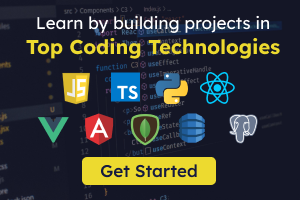Beginner-Friendly Python Libraries Every Developer Should Know
Python, with its simplicity and versatility, has gained immense popularity among developers. One of its greatest strengths lies in its vast collection of libraries that empower developers to tackle complex tasks with ease. In this blog post, we will explore seven beginner-friendly Python libraries that are essential for developers looking to enhance their coding skills and build powerful applications.
1. NumPy – The Foundation for Numerical Computing:
NumPy is an indispensable library for any developer working with numerical computations and data analysis in Python. At the core of NumPy is its powerful data structure, the multi-dimensional array, which allows efficient manipulation of large datasets and enables mathematical operations on arrays with ease. With NumPy, you can perform tasks like array slicing, reshaping, and element-wise operations effortlessly. Its extensive collection of mathematical functions, such as linear algebra operations, Fourier transforms, and statistical calculations, provides a solid foundation for scientific computing. By utilizing NumPy, you can boost your computational efficiency and streamline your data analysis workflows.

NumPy also offers a wide range of tools for advanced mathematical operations and array manipulation. For example, you can use NumPy’s broadcasting feature to perform element-wise operations on arrays of different shapes, eliminating the need for explicit loops. The library’s integration with other scientific Python libraries, such as SciPy and Matplotlib, further expands its capabilities. With its extensive documentation and vibrant community support, NumPy serves as a versatile tool for a wide range of applications, from scientific simulations and signal processing to machine learning and data analysis.
2. Pandas – Data Manipulation and Analysis Made Easy:
Pandas is a widely used library that simplifies data manipulation and analysis in Python. Its primary data structure, the DataFrame, provides a tabular and flexible representation of data, similar to a spreadsheet or a SQL table. With Pandas, you can load, clean, and transform data from various sources, including CSV files, Excel spreadsheets, and SQL databases. Pandas offers a wide range of functionalities for data wrangling, including data filtering, reshaping, merging, and grouping. Its intuitive and expressive syntax allows you to perform complex data manipulations with just a few lines of code.

One of Pandas’ key features is its powerful indexing and slicing capabilities. You can easily select subsets of data based on various criteria, such as column values or row indices. Pandas also provides efficient methods for handling missing data, such as filling or dropping missing values. Additionally, it offers powerful time series functionality, enabling convenient manipulation and analysis of time-based data. With its seamless integration with other libraries like NumPy and Matplotlib, Pandas forms an essential part of the data science ecosystem in Python. Whether you’re working on exploratory data analysis, data preprocessing, or feature engineering, Pandas’ versatility and efficiency make it a go-to library for data manipulation and analysis tasks.
3. Matplotlib – Visualizing Data with Ease:
Data visualization is a crucial aspect of data analysis and reporting. Matplotlib, a comprehensive plotting library, provides a wide range of visualization options to create stunning and informative graphs, charts, and plots. With Matplotlib, you can generate line plots, scatter plots, bar charts, histograms, heatmaps, and more, all with extensive customization capabilities. Its intuitive interface allows you to control every aspect of the visualization, including axes, labels, colors, and styles.
Matplotlib’s integration with NumPy makes it an ideal choice for visualizing data stored in NumPy arrays. You can seamlessly plot arrays and matrices, enabling you to gain insights and communicate data effectively. Moreover, Matplotlib supports various output formats, including interactive plots, static images, and even animations. Whether you’re exploring patterns in data, presenting findings to stakeholders, or creating visual narratives, Matplotlib empowers you to create professional-grade visualizations.
Conclusion
Python’s rich library ecosystem empowers developers to accomplish complex tasks with minimal effort. In this blog post, we explored seven beginner-friendly Python libraries that cover a wide range of applications, from numerical computing and data analysis to web communication, data visualization, and game development. By incorporating these libraries into your projects, you can accelerate your development process, build robust applications, and unlock the true potential of Python.
Remember, these libraries are just the tip of the iceberg. As you progress on your Python journey, continue exploring the vast world of Python libraries to expand your skill set and tackle more advanced challenges in your development endeavors. Happy coding!








0 Comments